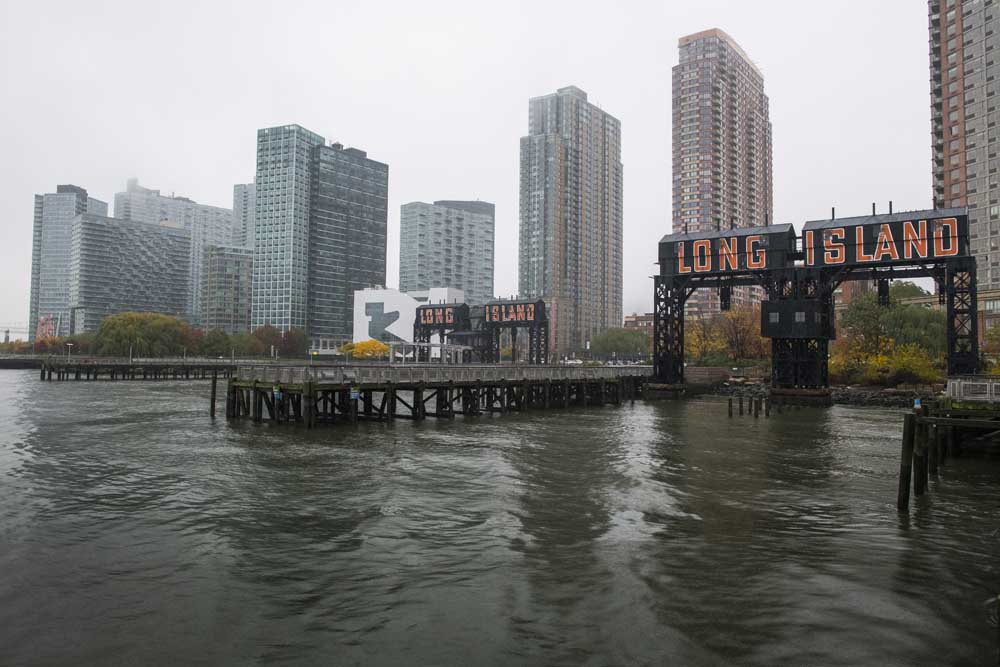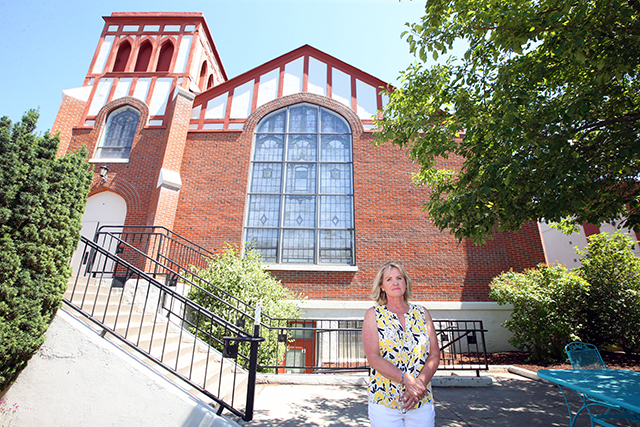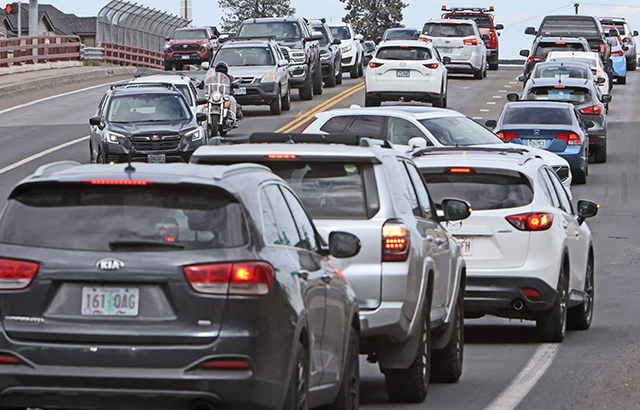Will Amazon’s HQ2 transform cities for better or worse?
Published 12:00 am Thursday, November 8, 2018

- The Gantry Plaza State Park, in the Long Island City neighborhood of Queens, in New York, Nov. 6. Amazon is reportedly finalizing plans for part of its second headquarters to be located in Long Island City. (Joshua Bright/The New York Times)
When Amazon announced plans to build a second headquarters somewhere in North America, it set off a competition for a sort of new-economy golden ticket, a chance for one city to become, almost overnight, a magnet for the high-paying jobs and entrepreneurial spark that are hallmarks of urban success in the 21st century.
Critics were just as quick to highlight potential downsides: soaring housing costs, clogged roads and strained public resources.
Trending
A year later, Amazon appears poised to transform two communities, not just one.
But the central question — will that transformation be for the good or the bad? — has not changed. Economists, urban planners and other experts say the answer could hinge on decisions in the coming months by the company and by the state and local officials who worked so hard to woo it.
“This is not about a one-time deal,” said Amy Liu, director of the Metropolitan Policy Program at the Brookings Institution. “This is about whether Amazon and these winning communities are going to create a long-term partnership to minimize the negative impact of supersonic growth.”
Amazon may have made that job a bit easier. Splitting the project, known as HQ2, between two cities should ease the pressure on housing and infrastructure critics feared. The company seems to have zeroed in on places able to handle an influx of workers.
Amazon’s list of 20 finalists, announced in January, included midsize cities that many experts said might struggle to absorb what was expected to be about 50,000 jobs. Amazon is reportedly finalizing plans for sites in New York City and the Washington, D.C., area, cities with multiple airports, extensive public transit systems and elite universities.
The likely locations — Long Island City, a neighborhood in Queens, and Crystal City, a part of Arlington, Virginia — are outside their regions’ central business districts and have room for development.
Trending
Washington, D.C., and New York rank among the country’s most expensive housing markets, and have experienced a recent boom in apartment construction. Rents there have fallen slightly over the past year, according to data from Zillow.
Even the undivided HQ2 project would have pushed up rents less than 1 percent per year in New York and Washington, D.C., according an analysis performed by Zillow earlier this year.
“Those two markets were in the leading edge of rental slowdowns,” said Aaron Terrazas, a Zillow economist.
Seattle looms over the HQ2 debate.
Its economy boomed since Amazon moved into the South Lake Union neighborhood in 2007. Many residents complain growth has come at the cost of affordability.
New York and Virginia, by contrast, can start planning immediately to build housing, expand infrastructure and improve transit systems. If they do, Amazon could be the nudge that regions needed to address long-standing challenges, said Sarah Rosen Wartell, president of the Urban Institute, a Washington, D.C.-based think tank.
“There is a way that something like this focuses the mind,” Wartell said.
The key is ensuring policies benefit all residents, not just highly paid Amazon workers, Wartell said. That means building housing for low- and middle-income families, not just luxury condominiums, and improving transit options in poorer neighborhoods.
Critics are skeptical of that prospect.
Lauren Jacobs, executive director of the Partnership for Working Families, a network of local advocacy organizations, said Amazon should make specific promises to train and hire workers locally, rather than just bringing them in from out of town.
“Many of our neighbors are still struggling in this economy, and this could be an amazing transformational thing to have 25,000 jobs come to the community,” she said. “But we have to ensure we don’t see another wave of mass displacement of working-class residents.”
Some of the HQ2 finalists promised enormous tax incentives to try to lure Amazon to their cities — a strategy criticized by economists, who say such deals rarely pay off. It isn’t yet clear what subsidies Virginia and New York offered Amazon. There are signs the project didn’t come cheap. Gov. Andrew Cuomo of New York said Monday the state offered “a great incentive package,” and quipped he would change his name to “Amazon Cuomo if that’s what it takes” to land the deal.
Timothy Bartik, an economist for the Upjohn Institute in Kalamazoo, Michigan, who has studied tax incentives, said comments such as Cuomo’s were concerning. He and other economists worry about a “race to the bottom,” where state and local governments compete to offer subsidies.
Not all incentives are created equal, he noted. Efforts to streamline regulatory and permitting processes, for example, can make projects more attractive to companies without costing taxpayers much, if anything. Investments in infrastructure or job training can reap benefits for the community even if they are initially promised as a way to help a specific company.
“I would be trying to leverage this into improvements that wouldn’t just benefit Amazon but benefit you more broadly,” Bartik said.
In the late 1990s, for example, Alabama offered large tax incentives to attract a factory from Mercedes-Benz, and South Carolina did the same with BMW.
Those deals helped create vibrant automaking industries that employ thousands and have helped lift regional economies. In some counties in the region, 1 in 10 workers are employed in the auto industry.
New York City and Washington, D.C., are a far cry from the rural Southeast. White-collar tech jobs require different skills than the factory jobs created by Mercedes and BMW.
Mark Zandi, chief economist for Moody’s Analytics, pointed to parallels. Amazon and other technology companies employ hotshot graduates of Stanford and Caltech and thousands of lower-level programmers, data analysts and workers who have technical skills and no advanced degrees.
“I think it does set these cities up to be rivals to Silicon Valley a generation or two down the road,” Zandi said. “It could be the catalyst.”








